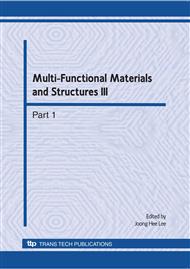p.463
p.467
p.471
p.475
p.479
p.483
p.487
p.491
p.495
Improvement in Etching Factor of Micro Patterns by Controlling Residual Stress of Copper Thin Foil
Abstract:
The effectiveness of residual stress on forming copper patterns of printed circuit board was investigated during applied thermal conditions. Generally, the electrolytic copper foil showed a compressive residual stress about -55~-60MPa as received, which easily caused to form copper patterns irregularly when the pattern was etched finely. The compressive residual stress was relaxed with applying heat-treatment for a few hours. However, we observed that the compressed residual stress of copper foil tended to be relaxed, constant, and compressed again during heat-treatment process, which is mainly considered as that the grain of copper is grown restrictively within a Cu thin foil layer. We suggested a quantitative method for controlling grain size, grain distribution and relaxing stress of copper foil, which was very helpful for increasing an etching factor to decrease pattern width.
Info:
Periodical:
Pages:
479-482
Citation:
Online since:
August 2010
Authors:
Keywords:
Price:
Сopyright:
© 2010 Trans Tech Publications Ltd. All Rights Reserved
Share:
Citation:


